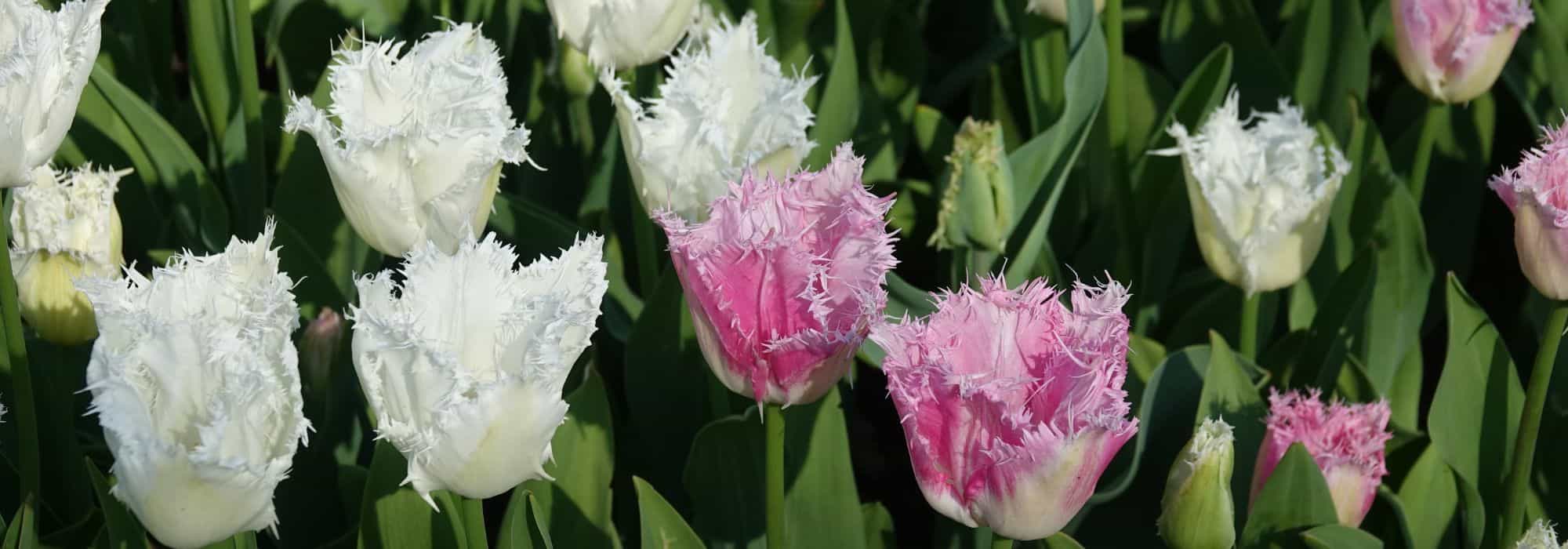

Tulipa Marit - Darwin hybrid Tulip
Tulipa Marit - Darwin hybrid Tulip
Tulipa Marit
Darwin hybrid Tulip
Special offer!
Receive a €20 voucher for any order over €90 (excluding delivery costs, credit notes, and plastic-free options)!
1- Add your favorite plants to your cart.
2- Once you have reached €90, confirm your order (you can even choose the delivery date!).
3- As soon as your order is shipped, you will receive an email containing your voucher code, valid for 3 months (90 days).
Your voucher is unique and can only be used once, for any order with a minimum value of €20, excluding delivery costs.
Can be combined with other current offers, non-divisible and non-refundable.
This plant carries a 6 months recovery warranty
More information
We guarantee the quality of our plants for a full growing cycle, and will replace at our expense any plant that fails to recover under normal climatic and planting conditions.
Would this plant suit my garden?
Set up your Plantfit profile →
Description
The Darwin Hybrid Tulip 'Marit' is a variety with soft pastel colours. It offers large, thick flowers in a variable mix of peach-pink to raspberry-pink and primrose-yellow. Belonging to the line of remarkable Darwin hybrids, this vigorous tulip produces large flowers with strong, weather-resistant stems. It blooms in the heart of spring. This variety has been awarded the Award of Garden Merit by the Royal Horticultural Society.
The Darwin Hybrid Tulip 'Marit' belongs to the Lily family. Of horticultural origin, it is currently classified in Division 4, which is characterised by large, single, oval flowers that appear in the middle of the season, carried by long, weather-resistant stems. Tulips in this group are the most cultivated for the cut flower trade. Originally derived from cross-breeding with botanical species such as T. fosteriana, they show no signs of their wild ancestry. 'Marit' reaches a height of 70 cm when in bloom. Perched on strong stems, well above the broadly lanceolate leaves, the large flowers are elongated, elegant, with a delightful hue, made of a subtle blend of delicious pink and tender yellow. The colour is enhanced by the slightly waxy and translucent texture of the petals. The flowering takes place in April-May, with each flower lasting several days before fading.
The 'Marit' tulip stands out in large flowerbeds and bouquets. Its delicacy harmonises with tulips in bolder colours to create a striking contrast and a dynamic ensemble. It accompanies the flowering of spring bulbs such as daffodils, jonquils, hyacinths, or pairs well with lady's mantle, Corsican hellebores, and spurges with their tangy shades, creating a joyful and delightful mix with the pastel tulip. In borders, rockeries, and flower beds, or in pots and containers, its tall stature and delicate colour add a touch of elegance and refinement to compositions. To prolong its vase life, use a small amount of water, just enough to cover the bottom, and if the tulips open too quickly, add two to three ice cubes to the vase each day.
Plant habit
Flowering
Foliage
Botanical data
Tulipa
Marit
Liliaceae
Darwin hybrid Tulip
Cultivar or hybrid
Planting and care
Plant Darwin Marit bulbs in autumn, from September to December, at a depth of 15 cm, spacing them 10 cm apart in ordinary, slightly acidic, neutral, or slightly chalky, loose, well-worked, and well-draining soil. Never add uncomposted manure or compost to the planting soil, as this could cause the bulbs to rot. The tulip will thrive in moist to dry soil in summer. Place it in a good, sunny or semi-shaded position. Once flowering is finished, it is a good idea to remove the seed heads to avoid exhausting the plant.
Planting period
Intended location
Care
Planting & care advice
This item has not been reviewed yet - be the first to leave a review about it.
Haven't found what you were looking for?
Hardiness is the lowest winter temperature a plant can endure without suffering serious damage or even dying. However, hardiness is affected by location (a sheltered area, such as a patio), protection (winter cover) and soil type (hardiness is improved by well-drained soil).

Photo Sharing Terms & Conditions
In order to encourage gardeners to interact and share their experiences, Promesse de fleurs offers various media enabling content to be uploaded onto its Site - in particular via the ‘Photo sharing’ module.
The User agrees to refrain from:
- Posting any content that is illegal, prejudicial, insulting, racist, inciteful to hatred, revisionist, contrary to public decency, that infringes on privacy or on the privacy rights of third parties, in particular the publicity rights of persons and goods, intellectual property rights, or the right to privacy.
- Submitting content on behalf of a third party;
- Impersonate the identity of a third party and/or publish any personal information about a third party;
In general, the User undertakes to refrain from any unethical behaviour.
All Content (in particular text, comments, files, images, photos, videos, creative works, etc.), which may be subject to property or intellectual property rights, image or other private rights, shall remain the property of the User, subject to the limited rights granted by the terms of the licence granted by Promesse de fleurs as stated below. Users are at liberty to publish or not to publish such Content on the Site, notably via the ‘Photo Sharing’ facility, and accept that this Content shall be made public and freely accessible, notably on the Internet.
Users further acknowledge, undertake to have ,and guarantee that they hold all necessary rights and permissions to publish such material on the Site, in particular with regard to the legislation in force pertaining to any privacy, property, intellectual property, image, or contractual rights, or rights of any other nature. By publishing such Content on the Site, Users acknowledge accepting full liability as publishers of the Content within the meaning of the law, and grant Promesse de fleurs, free of charge, an inclusive, worldwide licence for the said Content for the entire duration of its publication, including all reproduction, representation, up/downloading, displaying, performing, transmission, and storage rights.
Users also grant permission for their name to be linked to the Content and accept that this link may not always be made available.
By engaging in posting material, Users consent to their Content becoming automatically accessible on the Internet, in particular on other sites and/or blogs and/or web pages of the Promesse de fleurs site, including in particular social pages and the Promesse de fleurs catalogue.
Users may secure the removal of entrusted content free of charge by issuing a simple request via our contact form.
The flowering period indicated on our website applies to countries and regions located in USDA zone 8 (France, the United Kingdom, Ireland, the Netherlands, etc.)
It will vary according to where you live:
- In zones 9 to 10 (Italy, Spain, Greece, etc.), flowering will occur about 2 to 4 weeks earlier.
- In zones 6 to 7 (Germany, Poland, Slovenia, and lower mountainous regions), flowering will be delayed by 2 to 3 weeks.
- In zone 5 (Central Europe, Scandinavia), blooming will be delayed by 3 to 5 weeks.
In temperate climates, pruning of spring-flowering shrubs (forsythia, spireas, etc.) should be done just after flowering.
Pruning of summer-flowering shrubs (Indian Lilac, Perovskia, etc.) can be done in winter or spring.
In cold regions as well as with frost-sensitive plants, avoid pruning too early when severe frosts may still occur.
The planting period indicated on our website applies to countries and regions located in USDA zone 8 (France, United Kingdom, Ireland, Netherlands).
It will vary according to where you live:
- In Mediterranean zones (Marseille, Madrid, Milan, etc.), autumn and winter are the best planting periods.
- In continental zones (Strasbourg, Munich, Vienna, etc.), delay planting by 2 to 3 weeks in spring and bring it forward by 2 to 4 weeks in autumn.
- In mountainous regions (the Alps, Pyrenees, Carpathians, etc.), it is best to plant in late spring (May-June) or late summer (August-September).
The harvesting period indicated on our website applies to countries and regions in USDA zone 8 (France, England, Ireland, the Netherlands).
In colder areas (Scandinavia, Poland, Austria...) fruit and vegetable harvests are likely to be delayed by 3-4 weeks.
In warmer areas (Italy, Spain, Greece, etc.), harvesting will probably take place earlier, depending on weather conditions.
The sowing periods indicated on our website apply to countries and regions within USDA Zone 8 (France, UK, Ireland, Netherlands).
In colder areas (Scandinavia, Poland, Austria...), delay any outdoor sowing by 3-4 weeks, or sow under glass.
In warmer climes (Italy, Spain, Greece, etc.), bring outdoor sowing forward by a few weeks.









































